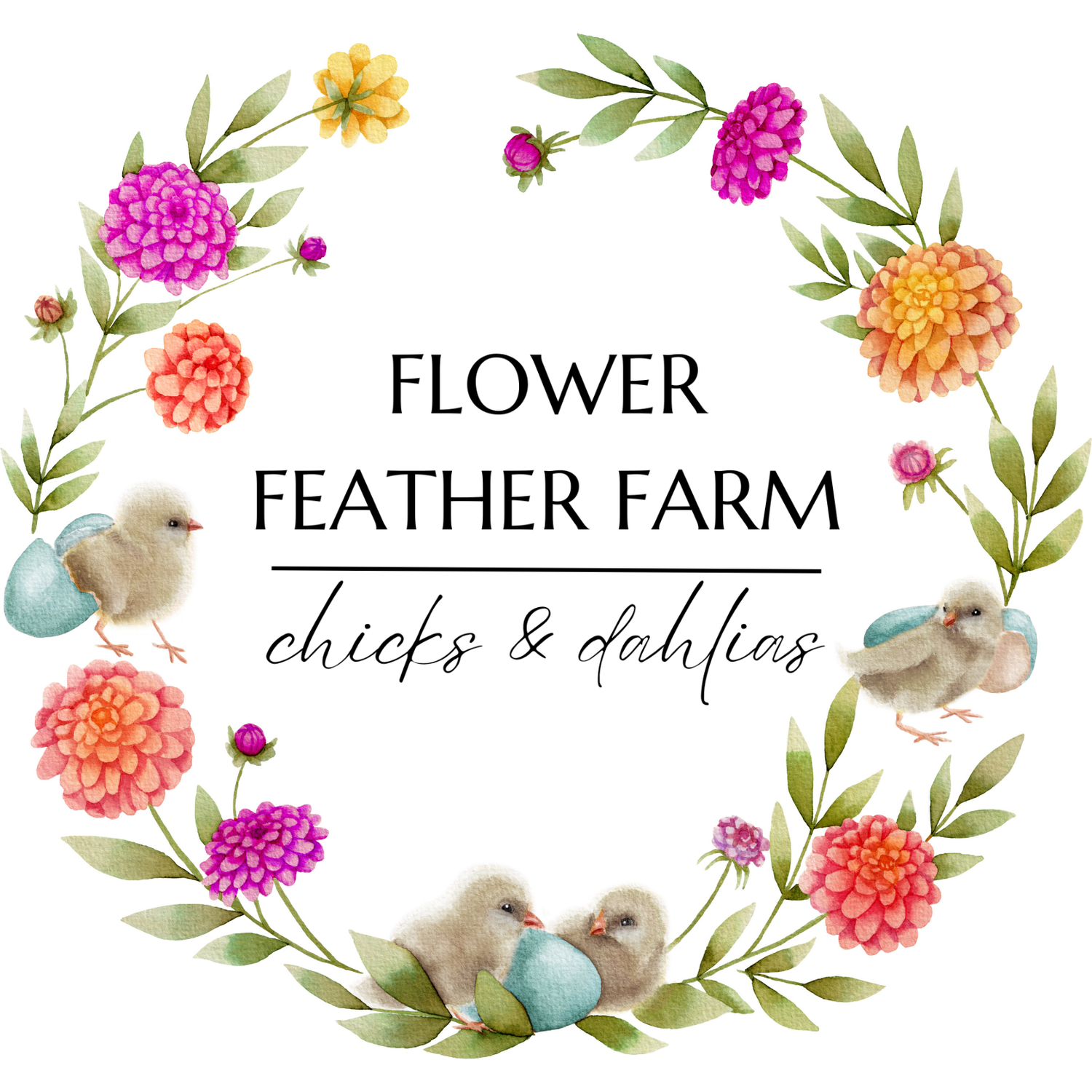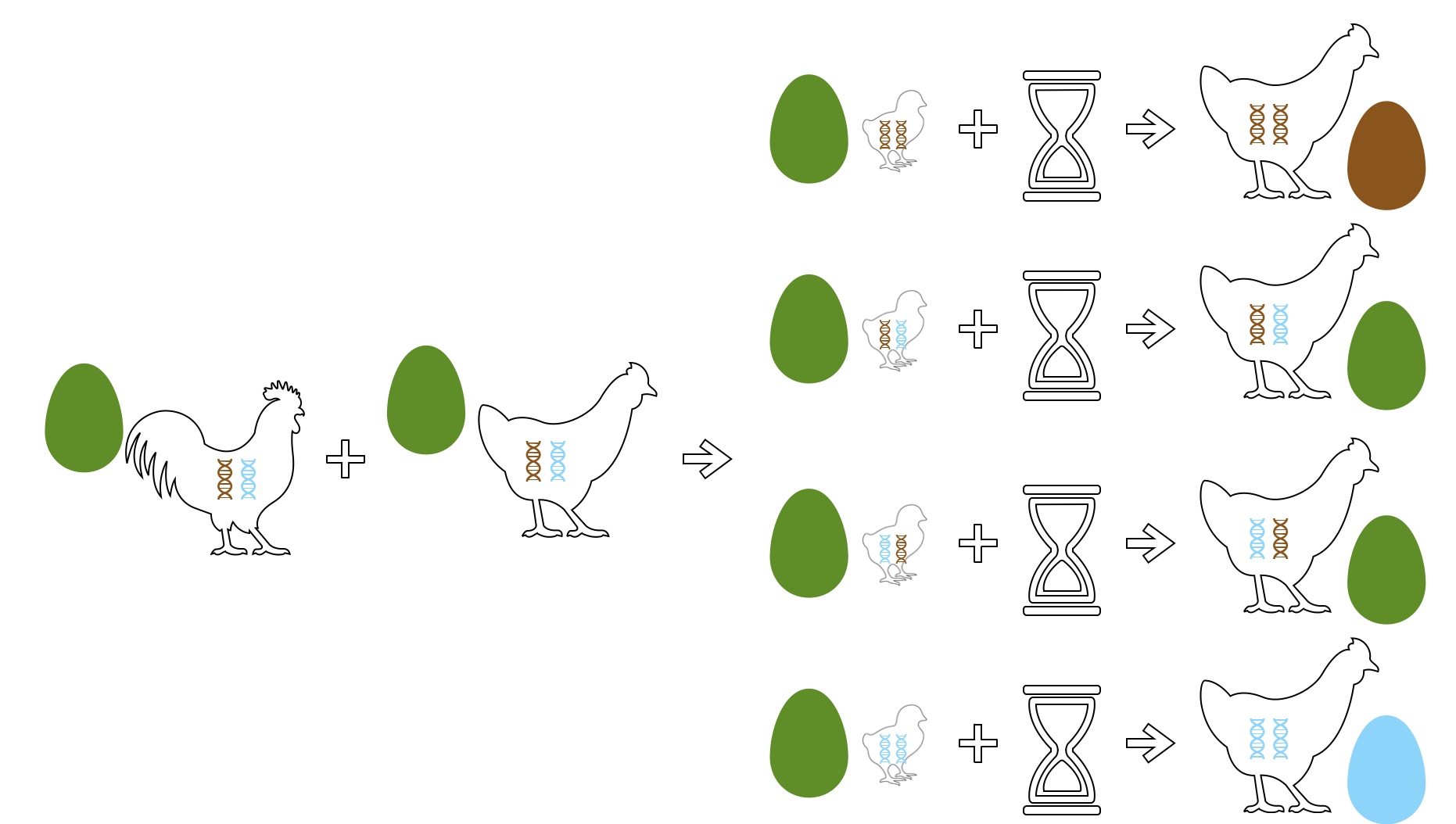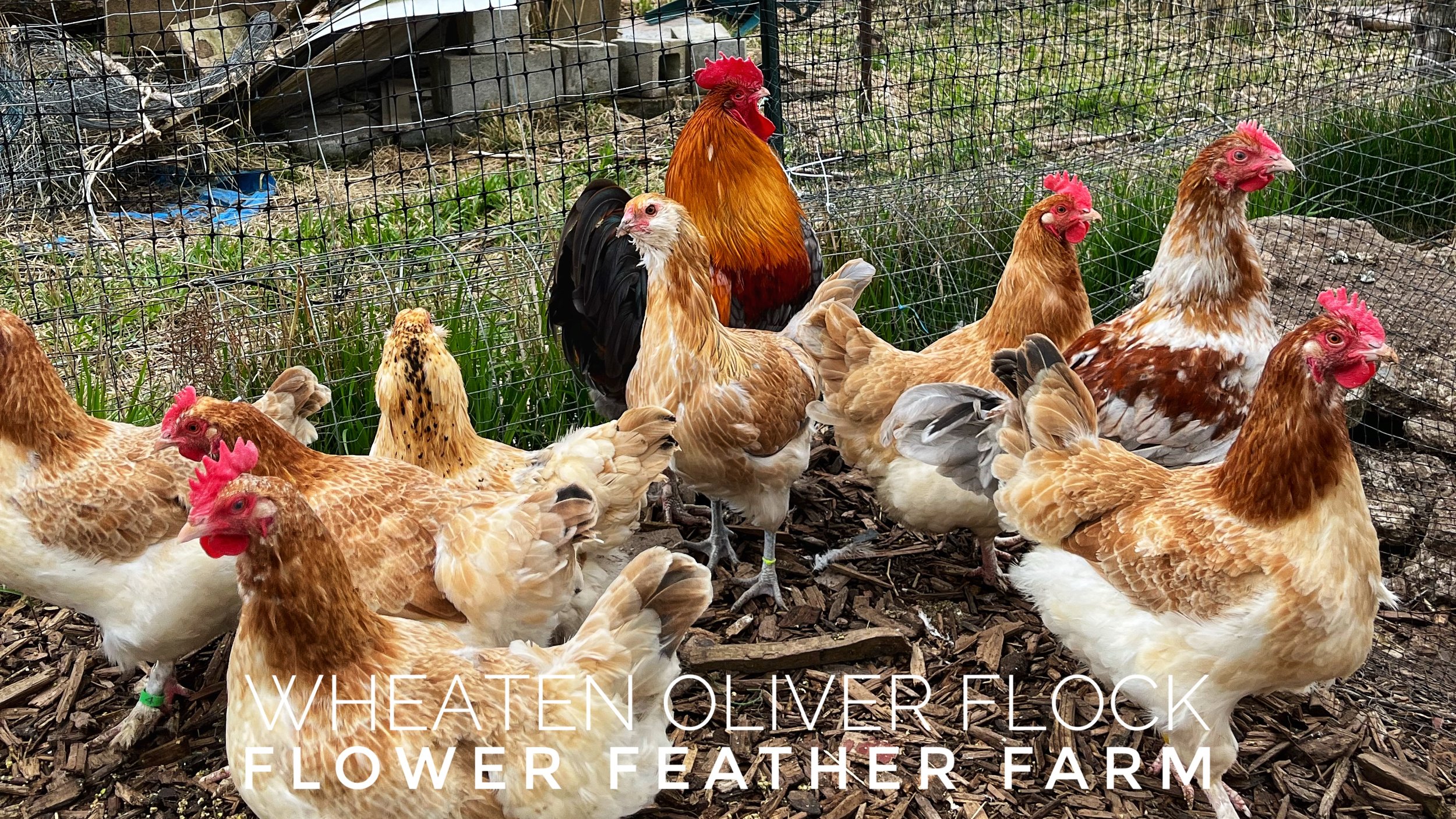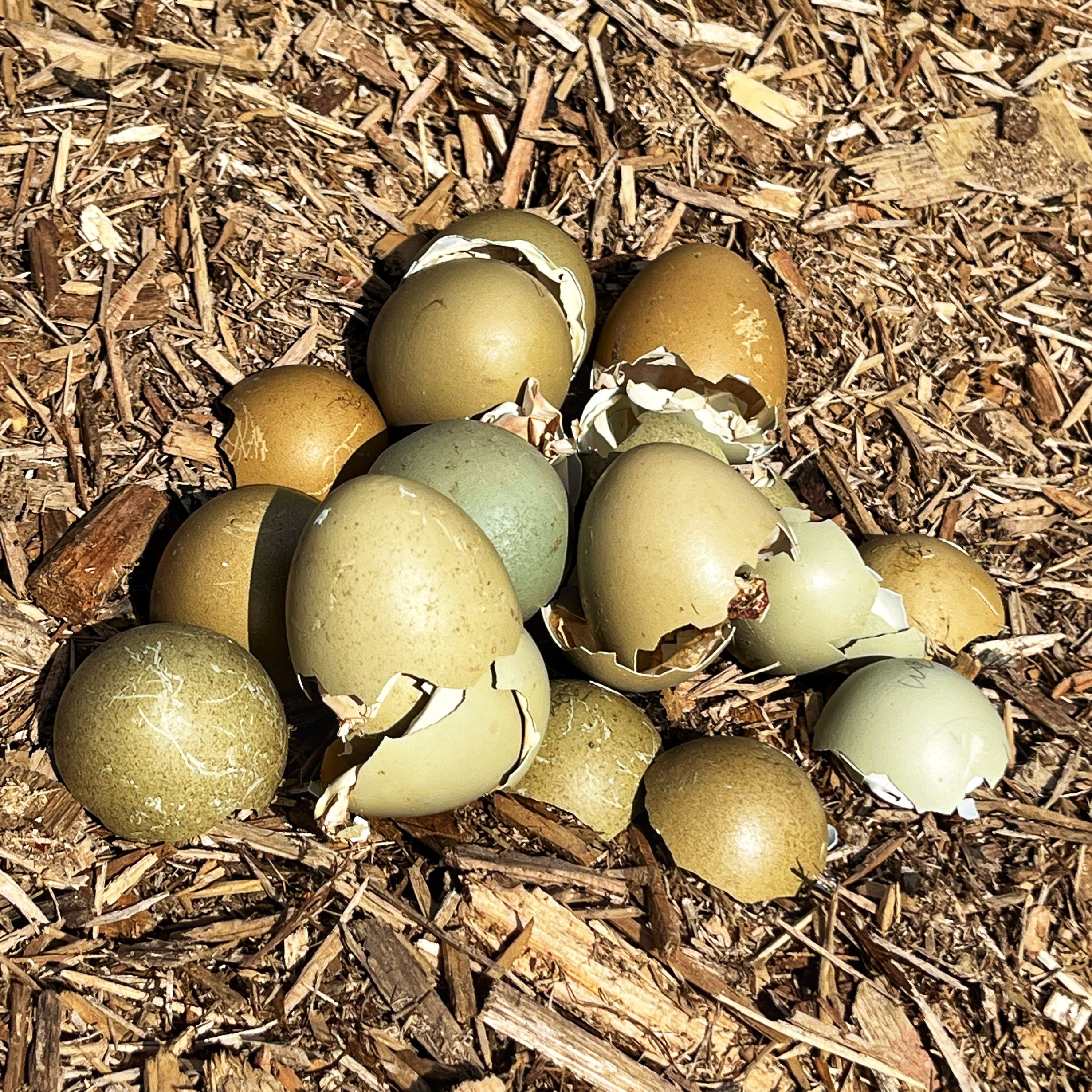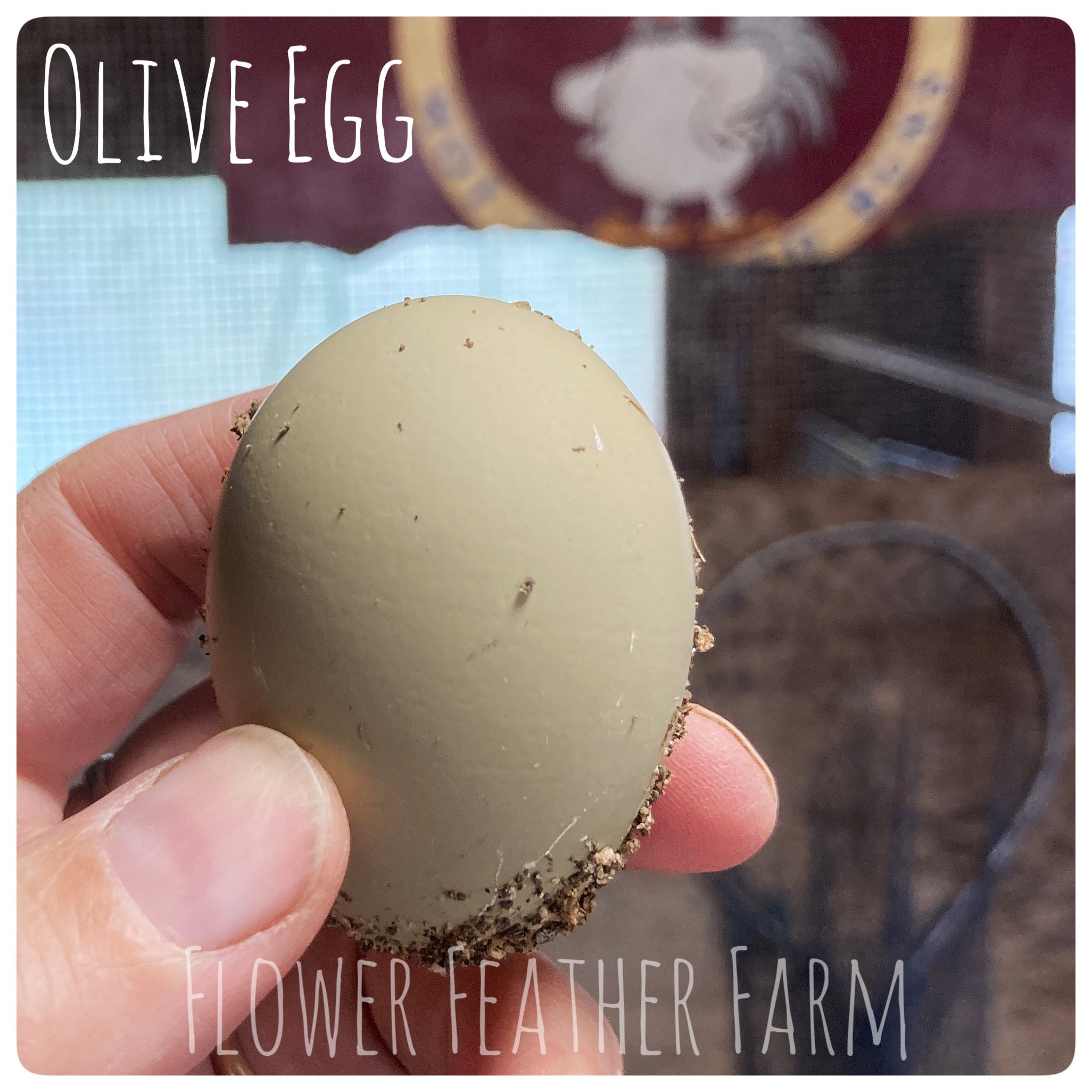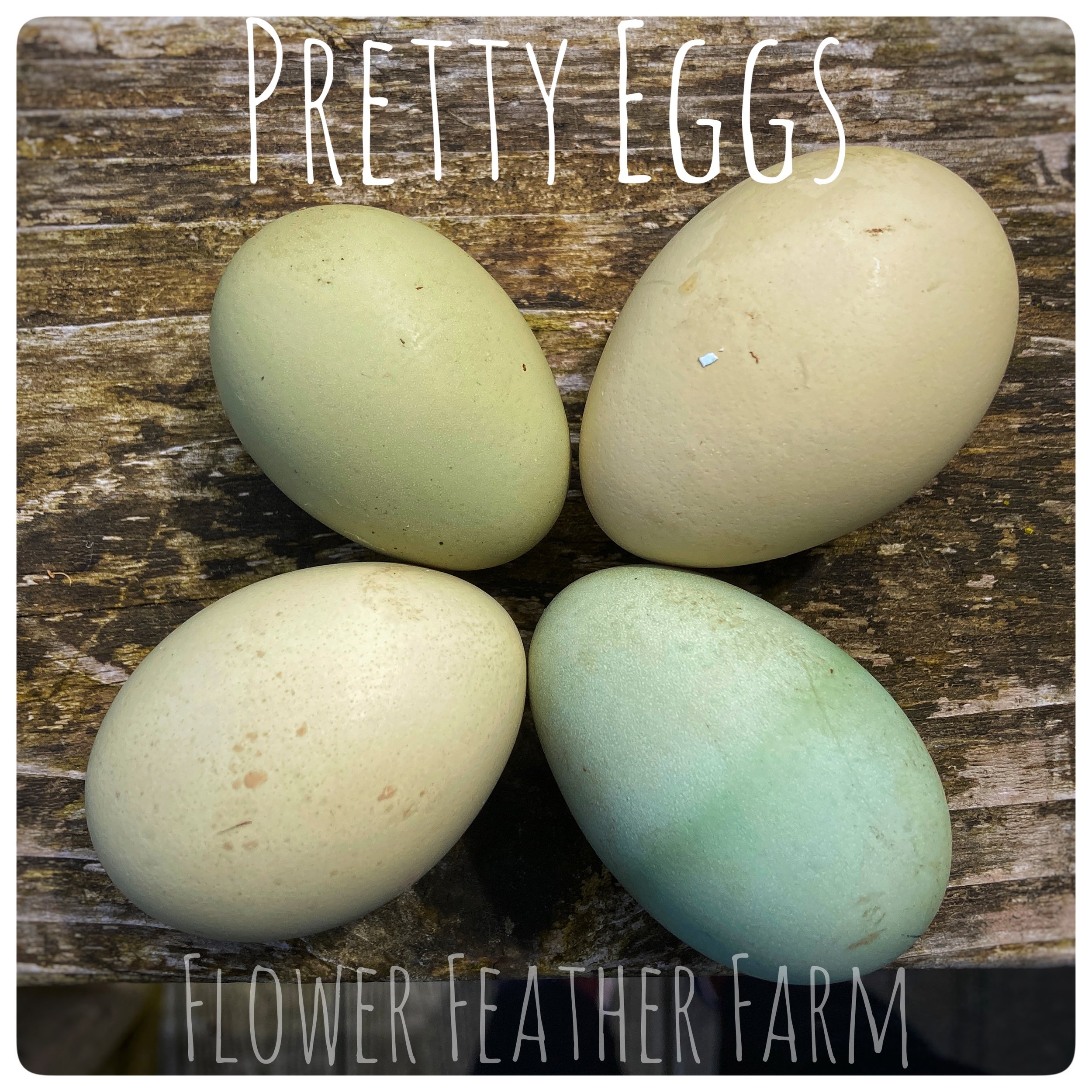Olive Eggers
“Hey, I purchased Olive Egger hatching eggs from you and the eggs you gave me are blue?! What’s up with that?”
or
“Hey, I purchased Olive Egger chicks from you and they grew up and are laying brown or blue eggs. What’s up with that?”
”Thank you for asking. It’s complicated.”
So, an Olive Egger is a hen that lays green eggs. One of her parents contributed a brown egg gene, and the other contributed a blue egg gene. This can be accomplished several ways.
Blue or Brown Egg Produces Green-Egg Laying Chick
A brown-egg rooster (that is, both his parents contributed brown-egg genes and he hatched from a brown egg) covers a blue egg hen (both her parents contributed blue-egg genes and she hatched from a blue egg and lays blue eggs) who then lays a blue egg that contains a chick with one brown egg gene from dad and one blue egg gene from mom. If the chick is female, she will grow up to lay green eggs and will be referred to as a F1 Olive Egger.
Brown Egg Rooster over Blue Egg Hen
Alternately, a blue egg rooster covers a brown egg hen who then lays a brown egg that contains a chick with one brown-egg gene from dad and one blue-egg gene from mom. If the chick is female, she will grow up to lay green eggs and will be referred to as a F1 Olive Egger.
Blue Egg Rooster over Brown Egg Hen
Blue Egg Produces a Blue- or Green-Egg Laying Chick
A green egg rooster (carries one blue-egg gene and one brown-egg gene) covers a blue egg hen who then lays a blue egg that contains either one of these:
a chick with one brown-egg gene from dad and one blue-egg gene from mom. If the chick is female, she will grow up to lay green eggs and will be referred to as a F2 Olive Egger.
a chick with one blue-egg gene from dad and one blue-egg gene from mom. If the chick is female, she will grow up to lay blue eggs.
Green Egg Rooster over Blue Egg Hen
Green Egg Produces a Blue- or Green-Egg Laying Chick
A blue egg rooster (carries two blue-egg genes) covers a green egg hen who then lays a green egg that contains a chick that contains either one of these:
a chick with one blue-egg gene from dad and one brown-egg gene from mom. If the chick is female, she will grow up to lay green eggs and will be referred to as a F2 Olive Egger.
a chick with one blue-egg gene from dad and one blue-egg gene from mom. If the chick is female, she will grow up to lay blue eggs.
Blue Egg Rooster over Green Egg Hen
Green Egg Produces Brown- or Green-Egg Laying Chick
A brown egg rooster (carries two brown-egg genes) covers a green egg hen who then lays a green egg that contains a chick that contains either one of these:
a chick with one brown-egg gene from dad and one brown-egg gene from mom. If the chick is female, she will grow up to lay brown eggs.
a chick with one brown-egg gene from dad and one blue-egg gene from mom. If the chick is female, she will grow up to lay green eggs and will be referred to as a F2 Olive Egger.
Brown Egg Rooster over Green Egg Hen
Brown Egg Produces Brown- or Green-Egg Laying Chick
A green egg rooster (carries a brown-egg gene and a blue-egg gene) covers a brown egg hen who then lays a brown egg that contains a chick that contains either one of these:
a chick with one brown-egg gene from dad and one brown-egg gene from mom. If the chick is female, she will grow up to lay brown eggs.
a chick with one blue-egg gene from dad and one brown-egg gene from mom. If the chick is female, she will grow up to lay green eggs and will be referred to as a F2 Olive Egger.
Green Egg Rooster over Brown Egg Hen
Green Egg Produces Brown- or Blue- or Green-Egg Laying Chick
An Olive Egger Rooster (1 blue and 1 brown egg gene) covers a Oliver Egger Hen (1 blue and 1 brown egg gene) and the results are less predictable. If each parent contributes their brown-egg gene, the off-spring will lay brown. If each contributes their blue-egg gene, the off-spring will lay blue. If one contributes brown and the other blue (and visa versa), the off-spring will lay green eggs. Generally 25% of the offspring will lay blue, 50% will lay green, and 25% will lay brown.
Green Egg Rooster over Green Egg Hen
So you have to chose. If you want to focus on green hatching eggs, then use green-egging hens, but no matter what color egg the rooster hatched from, there is a 50% chance that the chicks that hatch out of those eggs will lay blue or brown eggs. If you want to focus on chicks that will grow up to lay those lovely green eggs, you will only work with brown over blue or blue over brown, but then of course your hatching egg carton is full of not-green colored eggs.
My Olive Egger Pen has a Rooster that hatched from a green egg covering green- and blue-eggers. So that pen will produce 12.5 % brown-egging chicks, 37.5% blue-egging chicks, and 50% green-egging chicks, but if I hand you a carton of hatching eggs, they will look blue and green. Which answers our initial questions. I told you it’s complicated.
The Wheaten Olive Egger Pen is brown over green, so that one will give 50% brown-egging chicks and 50% green-egging chicks, though the carton of hatching eggs will all be a lovely green.
Here is the whole chart, which I made and is copyrighted.
Olive Egger Color Chart, copyright Suzanne Chandler 2023
Now, I need to tell you there is no “brown-egg gene”, but rather a whole assortment of genes that contribute to brown eggs. For the sake of simplicity, I consolidated them into one. The expression of the various brown-egg genes is what gives us the different shades of olive and, if one is back-crossing, can darken the eggs produced by the next generation.
